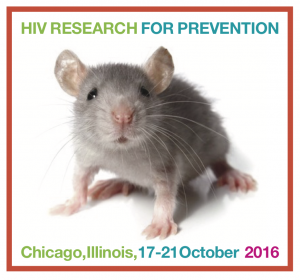Potential for EFdA as PrEP to prevent HIV transmission in women and their infants
29 November 2016. Related: Conference reports, HIV prevention and transmission, R4P 2016 Chicago.
Simon Collins, HIV i-Base
One of the most promising candidates for future PrEP is a small molecule, highly potent NRTI EFdA, for which limited data have been presented, mostly in animals.
It is notable then that a late breaker poster of several mouse studies was presented by Martina Kovarova, on behalf of an independent research group from University of North Carolina, rather than Merck who own the compound. [1]
As background, the poster notes that most HIV infections globally occur in women, that the majority of women are of child-bearing age, that without treatment 45% of women will transmit HIV to their baby mainly through breastfeeding and that only 31% of HIV positive children currently have access to ART.
This study used bone/liver/thymus (BLT) humanised mice as a preclinical model to study the efficacy of EFdA to prevent vaginal and oral transmission – with potential use to protect against sexual and breastfeeding transmission. The compound should generate excitement as it has the potential to be formulated in a slow-release small removable implant that would provide therapeutic doses for up to a year. EFdA has an IC50 of 14 nM, low cytotoxicity, sensitivity to drug resistant isolates and a low risk of drug resistance.
BLT and non-humanised mice were dosed with 10 mg/kg EFdA (approximately 5-fold higher than the equivalent human therapeutic dose) or left untreated. The ability to protect against in vitro challenge was tested in serum, cervicovaginal secretions and saliva. In all three samples, in vitro HIV inhibition was significantly higher from treated vs untreated animals (p<0.01 for serum and genital and p<0.05 for saliva).
The mice (6 untreated and 11 treated) were then exposed to three high dose vaginal challenges (approximately 100-fold higher than experienced for human sexual transmission) at 48 hour intervals while receiving daily EFdA for eight days. The degree of protection was highly significant with none of the treated mice becoming infected compared to all the control animals (p<0.0002).
Similar results were seen following oral exposure to high dose HIV with only 1/8 treated animals becoming infected compared to 5/5 untreated controls (p=0.0031).
These results will support clinical development of EFdA as a potential PrEP compound to prevent HIV transmission in women and their infants.
Comment
These results show good proof of concept. Even though the EFdA dose was higher than the comparative human therapeutic dose, the dose of HIV challenge was significantly higher again.
It is frustrating that so little data on this compound have been published by Merck, and that this exciting research into PrEP was conducted independently.
A similar poster on this research was also presented at IAS 2016 in Durban. [2]
References:
- Kovarova M et al. Pre-exposure prophylaxis with EFdA offers strong against high dose mucosal challenges. Poster abstract PD08.01LB
- Wahl A et al. HIV pre-exposure prophylaxis for women and infants prevents vaginal and oral HIV transmission in a pre-clinical model of HIV infection. AIDS 2016, Durban. Poster abstract TUPEA025.
http://programme.aids2016.org/Abstract/Abstract/9652 (Abstract)


